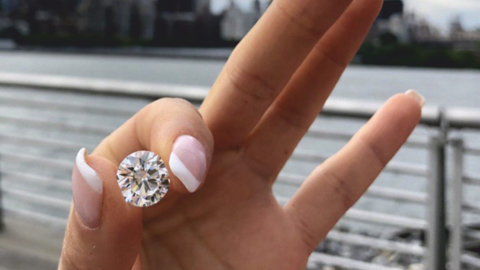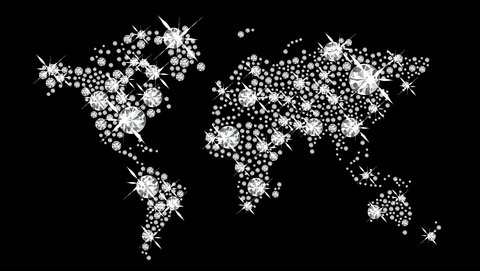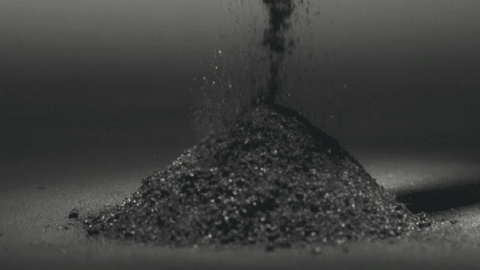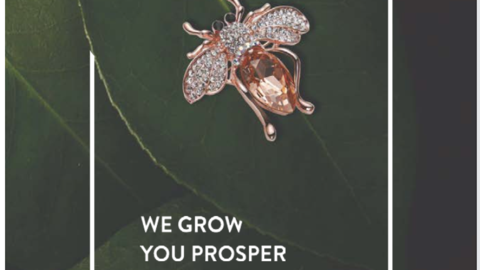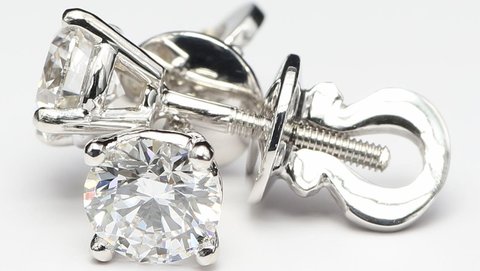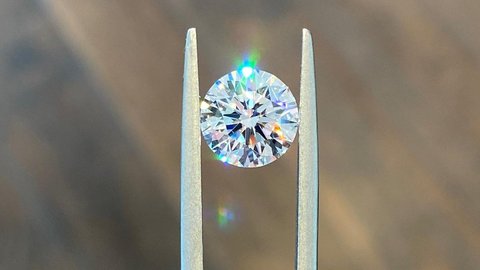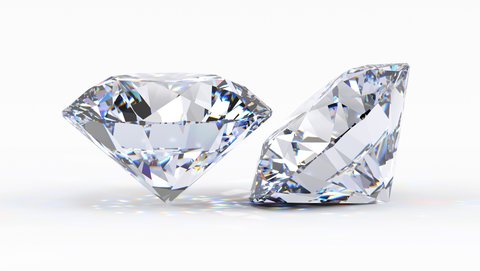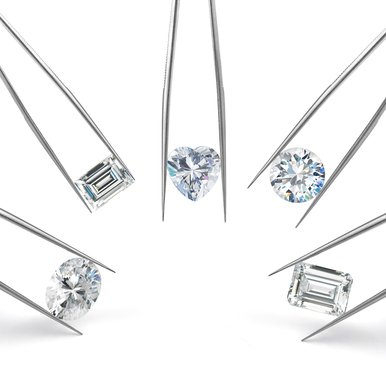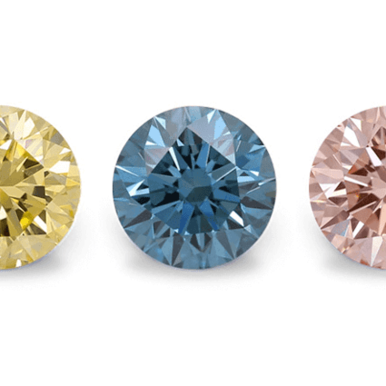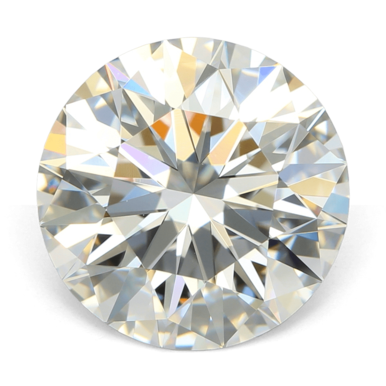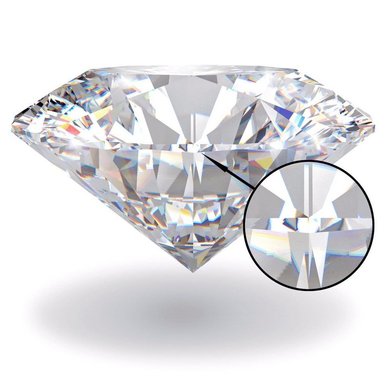
The Enduring Beauty of Lab-Grown Diamonds: A Complete Durability Guide
Lab-grown diamonds have revolutionized the jewelry industry as ethical and sustainable alternatives to mined diamonds. If you're considering a lab-grown diamond from Labrilliante, you might be wondering about their longevity and resilience. The good news? Lab-grown diamonds match natural diamonds in durability, scoring a perfect 10/10 on the Mohs hardness scale.
At Labrilliante, we believe in transparency when it comes to our exquisite lab-created diamonds. In this comprehensive guide, we analyze scratch resistance, toughness, and longevity using scientific data to demonstrate why lab-grown diamonds are not just an ethical choice but a durable investment that truly lasts forever. Whether you're selecting an engagement ring or a statement piece, understanding diamond durability ensures your beautiful gem remains pristine for generations.
Are lab grown diamonds durable?
With lab-grown diamonds increasing in popularity, their durability is often top of mind. How do their wearability and toughness stack up against conventional diamonds? Let’s explore some key insights.
Understanding Diamond Durability: The Science Behind the Sparkle
To appreciate why lab-grown diamonds from Labrilliante are remarkably durable, we need to understand what makes diamonds the hardest natural substance on Earth. Diamond durability isn't just about hardness—it encompasses several crucial properties that ensure your precious gem maintains its beauty throughout a lifetime of wear.

Atomic Structure & Hardness
At the molecular level, both lab-grown and natural diamonds consist of carbon atoms arranged in a tetrahedral crystal lattice. This tight, three-dimensional structure forms incredibly strong covalent bonds between atoms, creating a material that resists scratching from virtually any other substance. This is why diamonds—including those created in Labrilliante's advanced laboratories—score a perfect 10 on the Mohs hardness scale, making them resistant to everyday wear that would damage other gemstones.
The carbon lattice structure of lab-grown diamonds is identical to that of natural diamonds on an atomic level. This structural equivalence is what gives Labrilliante diamonds their exceptional scratch resistance and durability.
Toughness vs. Hardness
While hardness measures scratch resistance, toughness refers to a diamond's ability to resist breaking or chipping when impacted. Diamonds can be tough, but they aren't indestructible. Their crystalline structure contains cleavage planes—directions along which the stone can split if struck with sufficient force at precise angles.
Lab-grown diamonds from Labrilliante offer an advantage here: during the controlled growth process, we can minimize inclusions and structural flaws that might compromise a diamond's toughness. With fewer internal stress points, properly cut lab-grown diamonds can exhibit excellent impact resistance.
Heat & Chemical Stability
Diamonds are remarkably stable under extreme conditions. They can withstand temperatures exceeding 1500°C without damage and resist most chemicals encountered in daily life. Lab-grown diamonds share this exceptional stability, showing no significant differences in thermal or chemical resilience compared to their natural counterparts. This stability ensures your Labrilliante diamond maintains its brilliance even through decades of exposure to environmental factors.
Diamond Properties & Characteristics
| Property | Measurement | Significance |
|---|---|---|
| Hardness Resistance to scratching | 10/10 Mohs Scale | Highest scratch resistance of any gemstone |
| Thermal Stability Heat resistance | Stable to >1500°C | Withstands extreme heat without damage |
| Chemical Resistance Reaction to substances | Inert to most substances | Resistant to household chemicals |
| Diamond Structure: The tetrahedral carbon lattice provides exceptional strength across all measured properties | ||
Lab-Grown vs. Natural Diamonds: A Comprehensive Durability Comparison
When comparing the durability of Labrilliante's lab-grown diamonds to natural diamonds, it's important to understand that their physical and chemical properties are remarkably similar. This section breaks down the key factors that influence durability and explains why lab-grown diamonds stand toe-to-toe with their mined counterparts.
Complete Diamond Durability Comparison: Lab-Grown vs. Natural Diamonds
| Characteristic | Labrilliante Lab-Grown Diamonds | Natural (Mined) Diamonds |
|---|---|---|
| Mohs Hardness Scratch resistance scale | 10 on Mohs scale (hardest material) | 10 on Mohs scale (hardest material) |
| Crystal Structure Atomic arrangement | Cubic formation of tightly bonded carbon atoms | Cubic formation of tightly bonded carbon atoms |
| Resistance to Chipping/Cracking Structural integrity | Extremely resistant due to hardness/structure, often superior due to fewer inclusions | Extremely resistant due to hardness/structure, varies with inclusion content |
| Cutting Resistance Fabrication difficulty | Requires diamond-tipped blade to shape and polish | Requires diamond-tipped blade to shape and polish |
| Wear Resistance Surface durability | High resistance to surface wear over time | High resistance to surface wear over time |
| Toughness Break resistance | Very tough — difficult to scratch, break or cleave | Very tough — difficult to scratch, break or cleave |
| Heat Resistance Thermal stability | Excellent — won't oxidize or degrade until ~1,652 °F (900°C) | Excellent — won't oxidize or degrade until ~1,652 °F (900°C) |
| Thermal Stability Maximum heat tolerance | Stable to ~1500°C before structural changes | Stable to ~1500°C before structural changes |
| Chemical Resistance Reaction to substances | Inert to most substances, excellent resistance | Inert to most substances, excellent resistance |
| UV Stability Resistance to sunlight | Excellent — no fading or color change | Excellent — no fading or color change |
| Impact Resistance Resilience to blows | Excellent, often superior due to controlled growth with fewer inclusions | Excellent, varies with inclusion content and crystal stress |
| Durability Rating Overall assessment | Excellent — maintains beauty/integrity for a lifetime of wear | Excellent — maintains beauty/integrity for a lifetime of wear |
| Scientific Conclusion: Laboratory and gemological testing confirms that Labrilliante lab-grown diamonds are identical in durability to natural diamonds across all critical measurements, with potential advantages in specific scenarios due to their controlled growth environment and reduced inclusion content. | ||
Structural Equivalence
The creation process for lab-grown diamonds at Labrilliante uses either Chemical Vapor Deposition (CVD) or High Pressure High Temperature (HPHT) technology to replicate the conditions under which natural diamonds form in the earth. These methods produce diamonds with the same carbon crystal structure as mined diamonds:
- CVD Process: Carbon atoms derived from methane gas are deposited layer by layer onto a diamond seed crystal, creating a diamond with a primarily cubic structure.
- HPHT Process: Carbon is subjected to extreme pressure (approximately 1.5 million pounds per square inch) and temperatures exceeding 2,700°F, mimicking the natural diamond formation process.
The result is a diamond that's atomically identical to those formed over billions of years underground, ensuring comparable durability characteristics.

Inclusion Control
One area where Labrilliante lab-grown diamonds may actually have a durability advantage is in inclusion control. Natural diamonds form under unpredictable conditions over millions of years, often trapping various minerals and developing internal flaws that can affect structural integrity.
In our controlled laboratory environment, we can minimize these inclusions, resulting in diamonds with:
- Fewer internal stress points
- Reduced vulnerability to chipping along inclusion lines
- Greater structural homogeneity
- Enhanced clarity without compromising strength
This precision control means many lab-grown diamonds have fewer potential weak points than their natural counterparts of equivalent clarity grades.
Cleavage Plane Risks
Both natural and lab-grown diamonds have identical cleavage planes—specific directions along which they can split if struck with sufficient force. These planes exist along the octahedral crystal faces and represent the only significant vulnerability in a diamond's structure.
This identical crystallographic characteristic means that both types of diamonds should be set and worn with the same care considerations. Labrilliante ensures all our diamonds are cut and set to minimize exposure of these vulnerable planes, protecting your investment regardless of its origin.
Can You Scratch a Diamond? Understanding the Limits of Diamond Hardness
When discussing diamond durability, one of the most common questions is whether a diamond can be scratched. The simple answer is both fascinating and nuanced—let's explore the science behind diamond scratch resistance.

Diamond vs. Diamond
While diamonds earn a perfect 10 on the Mohs hardness scale, making them the hardest natural substance known, they aren't entirely immune to scratching. The most surprising fact is that <strong>only a diamond can scratch another diamond</strong>. This is due to the identical carbon crystal structure that gives both lab-grown and natural diamonds their exceptional hardness.
At Labrilliante, we often explain this paradox to our customers: diamonds are scratch-resistant against virtually everything they'll encounter in daily life, but should be stored separately from other diamonds to prevent potential contact scratches.
Directional Hardness: A Little-Known Fact
What many don't realize is that diamonds exhibit what gemologists call "directional hardness." This means that diamonds are slightly harder in some crystal directions than others. In practical terms:
- Diamonds are most resistant to scratching across the crystal faces
- They are slightly less resistant along certain crystallographic planes
- This difference is microscopic and generally only relevant to diamond cutters
This natural property exists in both lab-grown and mined diamonds, as it's inherent to the crystal structure itself.
Preventing Diamond Scratches
While the theoretical possibility of diamond-on-diamond scratching exists, Labrilliante customers can easily protect their investments with these simple precautions:
- Store each diamond piece separately in soft-lined compartments
- Remove diamond jewelry before handling other diamond pieces
- Have diamonds professionally cleaned and inspected annually to check for any microscopic surface wear
The Truth About "Diamond Scratch Tests"
You may have seen videos of people attempting to "scratch test" diamonds. It's important to understand that:
- Many purported diamond scratch tests using household items are actually testing the setting metal, not the diamond
- Authentic tests conducted by gemologists use carefully controlled conditions
- Consumer diamond testers use electrical/thermal conductivity, not scratching, to identify diamonds
Labrilliante diamonds undergo rigorous hardness verification during our quality assurance process, confirming their exceptional scratch resistance meets the same standard as natural diamonds.
Diamond Scratch Resistance Comparison
| Material | Mohs Hardness | Can It Scratch Diamond? |
|---|---|---|
| Diamond Natural or lab-grown | 10 | Yes - the only natural material that can |
| Moissanite Silicon carbide | 9.25 | No - insufficient hardness |
| Sapphire/Ruby Corundum | 9 | No - cannot affect diamond surface |
| Steel File Hardened metal | 6.5 | No - will be scratched by diamond instead |
| Glass Silica-based | 5.5 | No - diamond will easily scratch glass |
| Fingernail Keratin protein | 2.5 | No - extremely soft compared to diamond |
| Practical Implication: Labrilliante lab-grown diamonds are virtually immune to scratching from any material encountered in everyday life, with only other diamonds posing any potential scratch risk | ||
Remember that while diamonds can only be scratched by other diamonds, their perfect cleavage planes mean they can still chip if struck at exactly the right angle with sufficient force. This is why proper settings and careful handling remain important despite a diamond's exceptional scratch resistance.
At Labrilliante, we ensure our lab-grown diamonds offer the same legendary hardness as natural diamonds, giving you peace of mind that your jewelry will maintain its pristine appearance through daily wear for generations to come.
Diamond Myths Debunked: Separating Fact from Fiction
This is perhaps the most persistent myth about lab-grown diamonds, and it's completely false. Lab-grown diamonds, including all diamonds from Labrilliante, do not fade, cloud, or change color over time under normal wearing conditions.
The confusion likely stems from some consumers mixing up lab-grown diamonds with diamond simulants like cubic zirconia or moissanite, which can indeed show signs of wear or cloudiness over years of use. True lab-grown diamonds have the same optical stability as natural diamonds because they are chemically identical—pure carbon in a crystalline structure.
Scientific evidence confirms that a lab-grown diamond's brilliance and color will remain as eternal as that of a mined diamond. Independent testing by gemological laboratories has verified that lab-created diamonds maintain their optical properties even under accelerated aging conditions.
Another common misconception is that lab-grown diamonds are somehow more brittle or prone to chipping than natural diamonds. This myth has no scientific basis. Because lab-grown diamonds from Labrilliante have the identical carbon crystal structure as natural diamonds, they have the same physical properties.
In fact, the controlled growing environment often results in fewer internal flaws and inclusions, which can actually make some lab-grown diamonds more resistant to impact damage than their natural counterparts with similar clarity grades.
Impact and chip resistance tests conducted by independent gemological institutes consistently show that lab-grown diamonds perform just as well as natural diamonds when subjected to standardized force tests. Both types can chip if struck at the right angle along a cleavage plane—this is a characteristic of the diamond crystal structure itself, not a reflection of origin.
Some misinformation suggests that lab-grown diamonds might be more vulnerable to household chemicals or cleaning solutions. This is categorically untrue. Both natural and lab-grown diamonds are composed of the same chemical element—carbon—and arranged in identical crystal structures.
This chemical composition makes all diamonds highly resistant to common household chemicals. You can safely clean your Labrilliante lab-grown diamond with standard jewelry cleaning solutions without any risk of damage. Neither acid-based cleaners nor alkaline solutions will affect your diamond's structure or appearance.
The only substances that can damage diamonds (whether lab-grown or natural) are those that can induce oxidation at extremely high temperatures—conditions you would never encounter in daily life.
Common Myths About Lab-Grown Diamond Durability
| Common Myth | Scientific Reality |
|---|---|
| "Lab diamonds fade over time" Misconception about color stability | Lab-grown diamonds maintain their color and clarity indefinitely |
| "Lab diamonds break easily" Myth about structural integrity | They have identical hardness and similar or better resistance to breaking |
| "Lab diamonds aren't 'real' diamonds" Question of authenticity | They are chemically, physically, and optically identical to mined diamonds |
| "They can't be passed down as heirlooms" Concern about longevity | Lab diamonds will last for generations, just like natural diamonds |
| Scientific Consensus: Independent laboratory testing confirms that lab-grown diamonds demonstrate identical durability characteristics to natural diamonds | |
Preserving Your Labrilliante Diamond: Care and Maintenance Guide
While lab-grown diamonds are extremely durable, proper care ensures they maintain their exceptional brilliance for a lifetime. Labrilliante diamonds deserve the same attention and protection as any fine jewelry investment. Here's how to keep your lab-created diamond looking its best for generations to come.
Setting Considerations for Maximum Protection
The setting of your diamond plays a crucial role in its long-term durability. Even though diamonds are incredibly hard, certain setting styles provide better protection against accidental impacts:
- Bezel Settings: Provide maximum protection by surrounding the diamond's girdle with metal, ideal for active lifestyles.
- Halo Settings: The small diamonds surrounding the center stone can help absorb shock from accidental bumps.
- Prong Settings: While popular for maximizing light exposure, ensure prongs are checked regularly for security.
At Labrilliante, we carefully engineer our settings to minimize pressure on potential weak points. Even with the perfectly grown crystal structure of our lab diamonds, proper setting design is essential to prevent concentrated force on cleavage planes that could risk chipping.
We recommend having your prongs checked annually by a professional jeweler to ensure they maintain proper tension and position. Loose prongs not only risk stone loss but can also expose diamond edges to potential impact damage.
Best Cleaning Practices for Lab-Grown Diamonds
Keeping your Labrilliante diamond clean enhances both its beauty and longevity. Here are our expert recommendations:
Safe Cleaning Methods:
- Warm water with mild dish soap and a soft toothbrush is ideal for regular cleaning
- Commercial jewelry cleaners labeled safe for diamonds
- Professional cleaning twice yearly
Special Considerations for CVD Diamonds: While all Labrilliante diamonds are thoroughly tested for stability, some lab-grown diamonds created through the CVD process may contain trace elements that could theoretically react differently to ultrasonic cleaners. As a precaution, we recommend:
- Avoiding ultrasonic cleaners unless specifically approved by our gemologists
- If ultrasonic cleaning is desired, consult with our experts first regarding your specific diamond
What to Avoid:
- Abrasive cleaners or scrubbing pads that might damage the setting
- Chlorine bleach, which can damage some metals in the setting
- Storing diamonds where they can scratch other jewelry

Storage Solutions to Prevent Scratching
While your Labrilliante diamond can scratch other gemstones, proper storage protects both your diamond and other jewelry pieces:
- Store diamonds separately from other jewelry in fabric-lined compartments
- Consider using individual pouches for diamond pieces
- Always place diamonds in their storage case when not being worn
- For travel, use a case with individual compartments to prevent pieces from contacting each other
Diamond Care Best Practices
| Care Aspect | Recommendation | Why It Matters |
|---|---|---|
| Daily Wear Usage considerations | Remove during rough activities | Prevents impact against hard surfaces |
| Cleaning Frequency Maintenance schedule | Monthly at home, semi-annually professionally | Removes oils and buildup that diminish sparkle |
| Setting Checks Professional inspection | Annually | Ensures prongs remain secure and protective |
| Storage When not wearing | Separate from other jewelry | Prevents diamonds from scratching other gems |
| Longevity Strategy: Following these care guidelines will ensure your Labrilliante diamond maintains its exceptional brilliance for generations | ||
The Quality Guarantee: Certification & Assurance for Labrilliante Diamonds
When investing in a lab-grown diamond, proper certification is crucial for confirming its quality and durability characteristics. At Labrilliante, we prioritize transparency and quality assurance through rigorous testing and independent verification of every diamond we offer.
IGI & GIA Grading: The Industry Standard
All Labrilliante lab-grown diamonds undergo comprehensive grading by leading gemological authorities, providing you with independent verification of their exceptional qualities:

International Gemological Institute (IGI) certification is standard for all our lab-grown diamonds. Each certificate includes:
- Detailed 4Cs assessment (Carat, Cut, Color, Clarity)
- Confirmation of diamond type (lab-grown)
- Microscopic growth structure analysis
- Crystal pattern evaluation
- Identification of any potential durability concerns

Gemological Institute of America (GIA) certification is also available upon request. As the world's foremost diamond grading authority, GIA provides:
- Comprehensive growth method verification (CVD or HPHT)
- Advanced spectroscopic analysis
- Documentation of clarity characteristics that might affect durability
- Independent verification of structural integrity
These certificates don't just authenticate your diamond—they provide valuable documentation of its clarity characteristics. Since clarity directly impacts durability (fewer inclusions generally mean fewer weak points), these reports offer insight into your diamond's structural integrity.
Post-Growth Treatments: Transparency & Quality Control
Some lab-grown diamonds undergo post-growth treatments to enhance their color or clarity. At Labrilliante, we fully disclose all treatments and ensure they never compromise durability:
HPHT Color Enhancement:
- Used on some diamonds to improve color grade
- Scientifically proven not to affect durability
- Permanent and stable enhancement
- Always disclosed on certification
Clarity Treatments:
- Labrilliante primarily offers diamonds with natural clarity
- Any clarity enhancement is clearly documented
- Only treatments that maintain structural integrity are used
Unlike some competitors, we prioritize natural growth quality over excessive post-treatment. This approach ensures that the fundamental durability of your diamond remains uncompromised while still achieving exceptional aesthetic qualities.
Labrilliante's Additional Quality Assurance Processes
Beyond industry standard certification, every Labrilliante diamond undergoes our proprietary quality assurance protocol:
- Stress Testing: Advanced imaging to identify potential internal stress points
- Spectroscopic Analysis: Verification of pure carbon composition
- UV Fluorescence Testing: Assessment of crystal homogeneity
- Thermal Stability Verification: Confirming heat resistance consistent with natural diamonds
This multi-stage verification process ensures that every Labrilliante diamond not only meets but exceeds industry standards for durability and longevity.
Diamond Certification & Quality Verification
| Certification Aspect | What It Verifies | Durability Significance |
|---|---|---|
| Growth Structure Analysis Crystal formation examination | Crystal formation pattern | Confirms proper atomic alignment for maximum strength |
| Inclusion Mapping Internal feature detection | Location and type of any internal features | Identifies if inclusions might affect structural integrity |
| Treatment Disclosure Process transparency | Any post-growth processes | Ensures treatments don't compromise long-term stability |
| Color Stability Assessment Long-term appearance | Permanence of color | Verifies diamond will maintain appearance over time |
| Certificate Value: Proper certification from IGI or GIA provides scientific documentation of your diamond's durability characteristics and structural integrity | ||
Beyond Personal Durability: The Environmental & Ethical Longevity of Lab-Grown Diamonds
When discussing diamond durability, we typically focus on the physical properties that make diamonds last for generations. However, at Labrilliante, we believe true durability extends beyond the gemstone itself to encompass environmental sustainability and ethical longevity. This holistic view of durability makes lab-grown diamonds a truly future-proof choice.

Reduced Mining Impact: A More Durable Planet
Traditional diamond mining has significant environmental consequences that affect our planet's durability:
- Open-pit mines can displace approximately 250 tons of earth for just one carat of diamond
- Mining operations consume massive amounts of water and fossil fuels
- Habitat destruction can lead to biodiversity loss in mining regions
- Land rehabilitation post-mining is often incomplete or inadequate
Labrilliante's lab-grown diamonds eliminate these environmental impacts. Our advanced growing facilities require significantly fewer resources per carat produced:
- Up to 86% less water usage than traditional mining
- Approximately 50% less energy consumption
- Zero habitat disruption or land displacement
- Reduced carbon footprint, especially with our renewable energy initiatives
By choosing a Labrilliante lab-grown diamond, you're investing not just in a durable gemstone, but in a more durable world for future generations.
Long-Term Ethical Value: Conflict-Free Assurance
While natural diamonds can sometimes have questionable origins despite certification efforts, the transparent supply chain of lab-grown diamonds provides absolute confidence in their ethical sourcing:
- Complete traceability from creation to consumer
- Zero risk of connection to conflict financing
- Fair labor practices throughout the production process
- No association with exploitative mining conditions
This ethical clarity adds a different kind of durability to your investment—one that withstands the test of changing social values and increasing demand for provable ethical sourcing. As consumers become more concerned with the origins of their purchases, a lab-grown diamond from Labrilliante maintains its ethical value indefinitely.
Durability Through Sustainability
The environmental and ethical advantages of lab-grown diamonds represent a new dimension of durability that extends beyond the gemstone itself:
- Ecological Durability: Less environmental impact means a more resilient planet
- Ethical Durability: Conflict-free assurance that never expires or comes into question
- Social Durability: Growing acceptance and preference for sustainable luxury options
- Value Durability: Protected from potential future regulations on environmentally harmful products
Environmental Impact: Lab-Grown vs. Mined Diamonds
| Sustainability Factor | Natural Diamond Mining | Labrilliante Lab-Grown Diamonds |
|---|---|---|
| Water Usage Resource consumption | Up to 126 gallons per carat | Approximately 18 gallons per carat |
| Energy Consumption Power requirements | Approximately 538.5 million joules per carat | Approximately 250 million joules per carat |
| Land Disruption Environmental footprint | 30-100 sq. meters per carat | Zero land disruption |
| Carbon Footprint Climate impact | 57,000 grams CO2 per carat (avg.) | 8,100 grams CO2 per carat (Labrilliante process) |
| Environmental Durability: Choosing a Labrilliante lab-grown diamond significantly reduces environmental impact while providing identical gemstone durability | ||
Your Next Steps
- Browse Our Collection: Explore our range of lab-grown diamond jewelry designed to last a lifetime
- Book a Consultation: Speak with our diamond experts about specific durability features
- Learn More: Discover the innovative technology behind our diamond creation process
- Join Our Community: Connect with other conscious consumers who have chosen sustainable luxury
At Labrilliante, we're not just creating diamonds; we're crafting a more brilliant future—one that's as enduring as the diamonds themselves.
Advantages and disadvantages of lab diamonds
Have Any Questions?
Feel free to contact us for expert advice on any questions or inquiries you may have.
Frequently Asked Questions About Lab-Grown Diamond Durability
Yes, lab-grown diamonds are exactly as durable as natural diamonds. Both score 10 on the Mohs hardness scale and have identical carbon crystal structures. Scientific testing confirms they have the same scratch resistance, heat tolerance, and chemical stability as mined diamonds.
Absolutely! Lab-grown diamonds are just as permanent as natural diamonds. They won't fade, cloud, or degrade over time. The carbon bonds that form diamond crystals are extremely stable, allowing both natural and lab-grown diamonds to last for generations as family heirlooms.
Like natural diamonds, lab-grown diamonds can chip if struck forcefully at specific angles along their cleavage planes. However, this is a characteristic of all diamond crystal structures, not a defect. With proper settings and reasonable care, lab-grown diamonds will resist damage through decades of daily wear.
Interestingly, no. While CVD (Chemical Vapor Deposition) and HPHT (High Pressure High Temperature) use different processes to create diamonds, the end result is structurally identical. Both methods produce true diamonds with the same durability characteristics. However, some HPHT diamonds may contain trace elements of metals that could theoretically respond differently to specialized jewelry equipment like ultrasonic cleaners.
Yes! Round brilliant cuts typically offer the best durability because they have no corners that can chip. Princess cuts, with their pointed corners, are generally the most vulnerable to damage. Cushion cuts and oval cuts provide a good balance between unique appearance and durability.
Lab-grown diamonds have identical chemical resistance to natural diamonds, allowing them to withstand typical jewelry cleaning solutions and household chemicals. However, harsh cleaning agents might damage the metal settings, so it's still important to use appropriate diamond jewelry cleaners for both types.
No, a gemologist would not be able to detect any difference in wear patterns between lab-grown and natural diamonds after decades of use. Because they are atomically identical, they age in exactly the same way and develop the same microscopic wear characteristics over time.
This is a common misconception. Diamond itself (whether lab-grown or natural) is hypoallergenic and won't cause skin reactions. Any skin sensitivity is typically related to the metal in the setting, not the diamond. That said, Labrilliante's lab-grown diamonds undergo rigorous purification during creation, ensuring they're free from any potential irritants that might occasionally be present in natural diamond inclusions.


